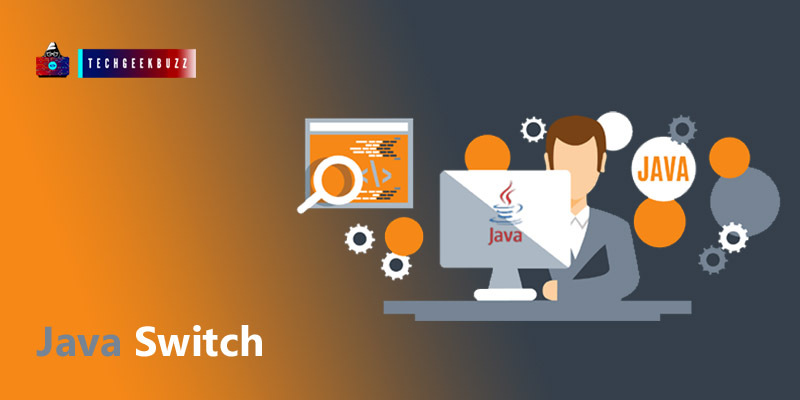Java switch statement will allow you to check for a number of conditions to execute the statements. It works like an if-else-if statement. The switch statement will allow you to use byte, short, int, long, enum types, String, and some wrapper types like Byte, Short, Int, and Long.
With the latest version of Java, you can also use strings in the switch statement. There is no limitation on the number of cases you will use within a single switch statement. The case value must match the types of the switch expression, which can be constant or literal.
You cannot use a variable for the case value. All case values must be different from each other else you will get a compile-time error. You can use an optional break statement in each case statement. If you do not use the break statement , then the control will go to the next case statement else. The control will be out of the switch expression.
Syntax
switch(expression){
case value1:
//code ;
break; //optional
case value2:
//code ;
break;
......
default:
code to be executed if all cases are not matched;
}
Example
public class DemoSwitch {
public static void main(String[] args) {
int num=20;
//Switch expression
switch(num){
//Case statements
case 10: System.out.println("10");
break;
case 20: System.out.println("20");
break;
case 30: System.out.println("30");
break;
//Default case statement
default:System.out.println("Invalid");
} }}
Output
20
Example Without Break Statement
If there is no break statement encountered then the matched case statement will get executed and the case statements after that.
public class DemoSwitch2 {
public static void main(String[] args) {
int number=20;
//switch expression with int value
switch(number){
//switch cases without break statements
case 10: System.out.println("10");
case 20: System.out.println("20");
case 30: System.out.println("30");
default:System.out.println("Invalid");
}
}
}
Output
20
30
Invalid
In the above example, the case with value 20 and the case statement after that will get executed.
Example Using a String as the Switch Expression
public class SwitchString {
public static void main(String[] args) {
String val="Expert";
int level=0;
switch(val){
case "Beginner": level=1;
break;
case "Intermediate": level=2;
break;
case "Expert": level=3;
break;
default: level=0;
break;
}
System.out.println("Invalid level);
}
}
Output
3
Nested Switch Example
public class NestedSwitchDemo {
public static void main(String args[])
{
//C - CSE, E - ECE, M - Mechanical
char opt= 'C';
int year = 2;
switch( year )
{
case 1:
System.out.println("English, Maths, Science");
break;
case 2:
switch( opt)
{
case 'C':
System.out.println("Operating System");
break;
case 'E':
System.out.println("Micro, Logic switching theory");
break;
case 'M':
System.out.println("Manufacturing Machines");
break;
}
break;
}
}
}
Output
Operating System
Switch Example with enum
public class SwitchEnumDemo {
public enum Day { Sun, Mon, Tue }
public static void main(String args[])
{
Day[] DayNow = Day.values();
for (Day Now : DayNow)
{
switch (Now)
{
case Sun:
System.out.println("Sunday");
break;
case Mon:
System.out.println("Monday");
break;
case Tue:
System.out.println("Tuesday");
break;
}
}
}
}
Output
Sunday
Monday
Tuesday
Wrapper in a Switch Statement
It allows you to use wrapper classes like byte, short, integer, and long as the switch expression.
public class WrapperInSwitchCase {
public static void main(String args[])
{
Integer age = 18;
switch (age)
{
case (16):
System.out.println("Invalid");
break;
case (18):
System.out.println("eligible for vote.");
break;
case (65):
System.out.println("senior citizen.");
break;
default:
System.out.println("Please give the valid age.");
break;
}
}
Output
eligible for vote.
Conclusion
Java switch-case is a multi-way branch statement analogous to the if-else-if ladder. It allows you to specify multiple conditions or cases as you wish. In this tutorial, we have provided various examples to help you gain clarity on the switch-case statement in Java. Refer to those examples and try them yourself.
Good Luck!
People are also reading:
